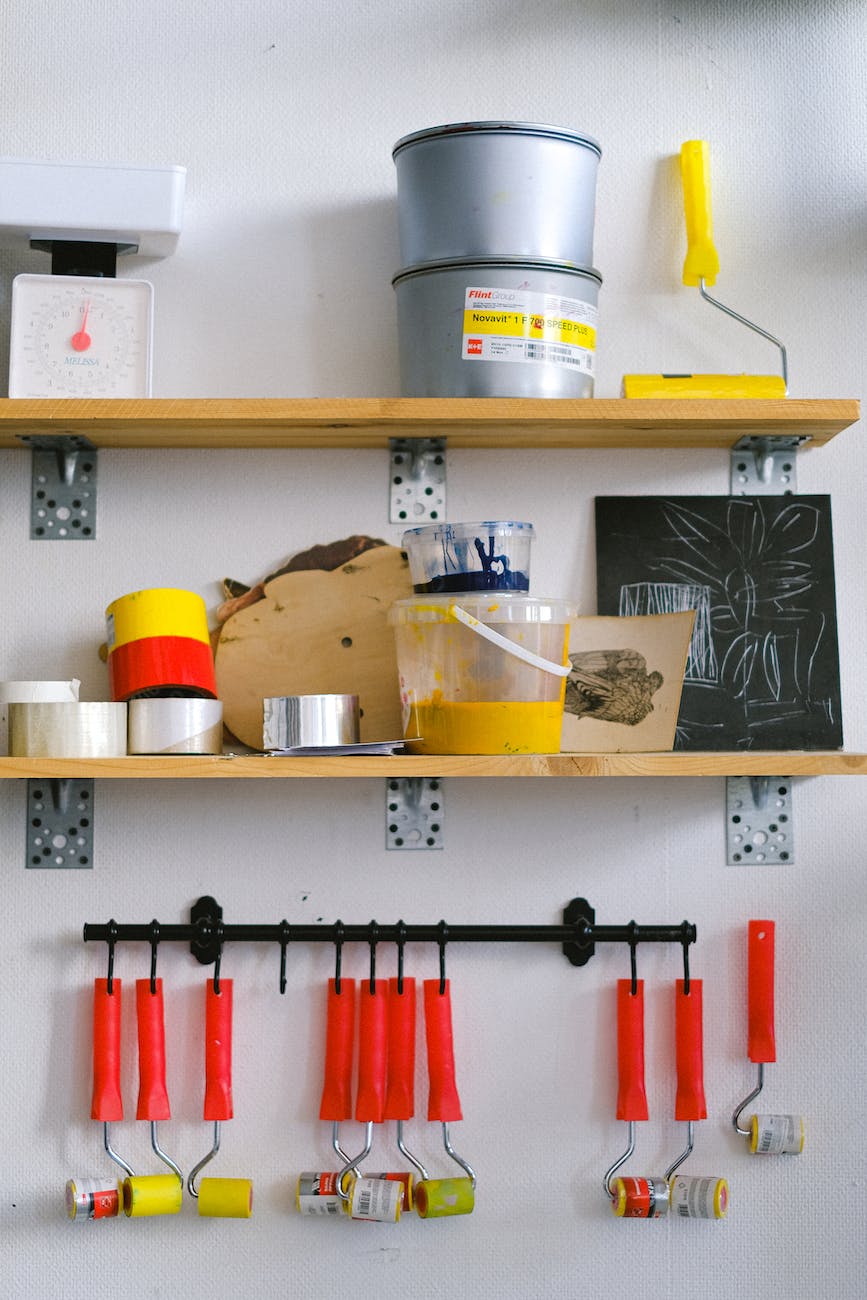Beginners Guides
Real Estate Commission: What Percent Do Realtors Get?

Understanding the real estate commission is crucial whether you’re interested in buying or selling a property.
If you’re a seller trying to figure out your expected expenses or a buyer wondering who bears the commission costs, knowing the percentage that goes to realtors is vital. While commission rates might differ, we aim to illuminate the typical commission rates and the process behind their determination.
Real Estate Commission Calculator
Real Estate Commission Calculator
Key Takeaways:
- The average commission rate for realtors is around 5.75% of the home’s final sales price.
- This percentage can vary across different markets, ranging from 5% to 6%.
- The commission is typically split between the listing agent and the buyer’s agent.
- Factors influencing commission rates include the broker, price point of the home, market conditions, and the specifics of the deal.
- Commission rates are negotiable, and sellers can discuss the rate with their agent.
How Real Estate Commission Splits Work
In a real estate transaction, the commission split between cooperating brokers and the split between a firm’s broker and their sponsored agent working the transaction are documented in the listing agreement and purchase agreement, respectively. The commission splits can vary based on agreements between brokers and their agents. The traditional commission model is often a 50/50 split between the listing broker and the buyer’s broker, but there can be variations in how compensation is handled.
Here’s a breakdown of how real estate commission splits typically work:
- Listing Broker: The listing broker represents the seller and is responsible for marketing the property, negotiating offers, and guiding the seller through the selling process. They typically receive their share of the commission from the seller’s proceeds at the closing of the sale.
- Buyer’s Broker: The buyer’s broker represents the buyer and helps them find suitable properties, negotiate offers, and navigate the buying process. They also receive their share of the commission from the seller’s proceeds at the closing of the sale.
It’s important to note that commission splits can vary depending on the agreements between brokers and their agents. Some brokerages may have different commission structures or offer higher splits to attract top-performing agents.
“The traditional commission model is often a 50/50 split between the listing broker and the buyer’s broker.”
In addition to the split between brokers, commission splits can also be negotiated between the sponsoring broker and the individual agent working the transaction. These agreements are typically outlined in the agent’s contract with the brokerage. Agents may receive a predetermined percentage of the commission based on their performance, experience, or other factors.
The details of commission splits are typically spelled out in the listing agreement and purchase agreement, ensuring transparency and clarity for all parties involved.
Determining the Commission Amount
When it comes to determining the commission amount in a real estate transaction, it is typically calculated as a percentage of the home’s final sales price. The specific commission rate can vary, but on a national average, realtors receive around a 5.75% commission. However, it’s important to note that this percentage can vary depending on the market and specific agreements.
For example, let’s consider a $300,000 home sale. With an average realtor commission rate, the total commission amount would be calculated as follows:
As the image illustrates, based on the average realtor commission rate, the total commission for a $300,000 home would amount to $17,250.
It’s worth mentioning that the commission is typically split between the listing agent and the buyer’s agent. The exact distribution is based on their agreed-upon commission split, which can vary depending on the specific circumstances of the transaction.
Who Pays the Commission?
In most real estate transactions, it is the home seller who is responsible for paying the commission. This includes both the commission for their own listing agent and the commission for the buyer’s agent. The commission amount is typically deducted from the proceeds of the home sale, meaning that the seller pays the commission out of the funds they receive from the buyer.
While the seller is typically responsible for paying the commission, there may be certain scenarios where the buyer pays for their own agent’s commission. This is more common in rental situations or in specific regions where it is customary for buyers to cover the costs of their agent’s commission.
“In most real estate transactions, it is the home seller who is responsible for paying the commission.”
It is important for both buyers and sellers to understand who is responsible for paying the commission before entering into a real estate transaction. This information can help with budgeting and negotiating the terms of the sale.
Commission Payment Responsibility
| Payment Responsibility | Description |
|---|---|
| Home Seller | Pays the full commission for the listing agent and the buyer’s agent. |
| Home Buyer | In certain scenarios, may pay for their agent’s commission, particularly in rentals or specific regions. |

This table provides a summary of the payment responsibility for real estate commissions. As shown, the home seller is typically responsible for paying the full commission, but there are situations where the buyer may have to cover their own agent’s commission.
Factors Influencing Commission Rates
When it comes to real estate commission rates, several factors come into play. These factors can include the broker you work with, the price point of the home, the current market conditions, and the specific details of the real estate deal.
For new agents, it’s common to see lower commission percentages compared to more experienced agents. Different brokerages may also have varying commission structures, which can affect the rates offered to clients.
Commission rates are negotiable, which means sellers have the opportunity to discuss and potentially adjust the rate with their agent. This allows for flexibility and the ability to find a commission rate that aligns with both the seller’s needs and the agent’s services.
The Impact of Brokerage and Experience
One significant factor that influences commission rates is the brokerage the agent works for. Each brokerage may have its own commission structure and policies in place. This can result in variations in the commission rates offered by agents from different brokerages.
Additionally, an agent’s experience level can also impact the commission rate. Experienced agents who have established a strong track record and a wide network may be able to command higher commission rates based on their expertise and reputation.
Market Conditions and Unique Deal Specifications
The state of the real estate market can also influence commission rates. In a competitive market where properties are in high demand, agents may be more likely to negotiate higher commission rates due to the increased level of effort and expertise required to secure a successful sale.
Furthermore, the specific details and complexity of a real estate deal can affect the commission rate. For example, deals involving luxury properties or commercial real estate may involve higher commission rates due to the specialized knowledge and extra effort required to handle these types of transactions.
“The commission rate is influenced by various factors, including the broker, market conditions, and the uniqueness of the real estate deal. It’s important for sellers to understand these factors and have open discussions with their agent to determine a fair commission rate.”
Negotiating Commission Rates
When it comes to commission rates in real estate, there is some room for negotiation. While industry standards often establish the baseline for commission percentages, the specifics of your situation can be taken into account. This means that you have the opportunity to discuss and negotiate commission rates with your real estate agent, ensuring a fair agreement for both parties involved.
One scenario where negotiation may be possible is when you are working with the same agent to sell your current home and buy a new one. In this case, you might be able to negotiate a loyalty discount with your agent. By maintaining a long-term working relationship, you can demonstrate your commitment and leverage this to negotiate a lower commission rate.
Additionally, some real estate agents offer discounted rates to repeat clients or investors who regularly buy and sell multiple properties. If you fall into this category, it could be worth exploring whether your agent provides any special rates or incentives for loyal clients or investors.
It’s important to keep in mind that the ability to negotiate commission rates may vary depending on the individual agent and their brokerage. Some agents may have more flexibility to adjust their rates, while others may have more strict protocols in place.
| Factors to Consider when Negotiating Commission Rates |
|---|
| 1. Market conditions |
| 2. Agent’s experience and track record |
| 3. Property price |
| 4. Agent’s workload and availability |
When entering into negotiations, it’s helpful to consider various factors that can influence commission rates. These factors include the current market conditions, the agent’s experience and track record, the price of the property being bought or sold, and the agent’s workload and availability.
By taking these factors into account and having an open and honest conversation with your agent, you can explore the potential for negotiating commission rates that align with your specific needs and expectations.
Alternatives to Traditional Commission Structures
In addition to traditional commission structures, there are alternative options available for both sellers and buyers in the real estate market. These alternatives can provide greater flexibility and potentially reduce costs associated with realtor fees and commissions.
1. Independent Brokerages with Lower Commission Rates
Some independent brokerages offer lower commission rates compared to larger, traditional firms. For example, there are brokerages that charge a flat 1% listing fee instead of the average 5.75% commission. This can result in significant savings for sellers without compromising on the quality of service they receive.
2. Transactional Agreements
A transactional agreement is an alternative structure where the listing agent provides limited services for a flat fee or a lower commission rate. This option can be suitable for sellers who prefer a more hands-on approach in marketing and showcasing their property, as they take on some of the tasks typically handled by the listing agent. Transactional agreements allow sellers to have greater control over the process while potentially reducing realtor fees.
3. Buyer Rebate Programs
Buyers can explore rebate programs offered by some real estate agents. In these programs, buyers receive a portion of their agent’s commission as a refund after closing on a property. This can help offset some of the costs associated with purchasing a home, making it a beneficial option for buyers looking to save on realtor fees and commissions.
“By considering these alternative commission structures, sellers and buyers have the opportunity to tailor their real estate experience to fit their specific needs and budgets,”
explains Emily Johnson, a real estate agent with over 10 years of experience. “It’s important to weigh the benefits and drawbacks of each option and consider how they align with your unique circumstances.”
To estimate potential savings and compare different commission structures, you can use a real estate commission calculator. These calculators help you assess the financial implications of various commission models, making it easier to make informed decisions when it comes to realtor fees and commissions.

Benefits of Alternative Commission Structures
Exploring alternatives to traditional commission structures offers several benefits:
- Cost savings for sellers: Lower commission rates can help sellers keep more of their home’s sale price.
- Customized services: Transactional agreements allow sellers to tailor the level of service they require, potentially reducing costs.
- Financial relief for buyers: Rebate programs provide buyers with a refund on their agent’s commission, helping offset closing costs or finance other expenses.
While these alternatives may not be suitable for every situation, they offer valuable options to consider when navigating the real estate market.
Commission Structure Benefits Considerations Independent Brokerages with Lower Commission Rates – Potential cost savings
– Competitive market exposure– Verify reputation and track record of the brokerage
– Confirm the services included in the lower commission rateTransactional Agreements – Flexible service options
– Lower commission rate or flat fee– Sellers may need to take on additional responsibilities
– Limited marketing support from the agentBuyer Rebate Programs – Financial relief for buyers
– Additional funds for closing costs or other expenses– Research eligibility requirements for rebate programs
– Discuss the program with your real estate agent
By considering these alternatives to traditional commission structures, sellers and buyers can make informed decisions that align with their financial goals and unique circumstances.
The Role of Brokers in Commission Fees
When it comes to real estate transactions, it’s common for real estate agents to work under a brokerage. This partnership between agents and brokers plays a crucial role in the calculation of commission fees.
Typically, a percentage of the agent’s commission is paid back to the brokerage. While this percentage can vary, it’s often between 5% and 20% of the agent’s commission. This arrangement ensures that the broker receives compensation for the support and resources they provide to the agent.
Working under a brokerage offers numerous benefits for real estate agents. It provides them with a professional network, access to training and mentorship, and administrative support. The broker’s role is to guide and assist the agent throughout the transaction process, helping them navigate complexities and ensuring compliance with industry regulations.
Sharing the Commission
Here’s a breakdown of how the commission is typically shared between the various parties involved:
- The total commission is split between the listing agent and the buyer’s agent.
- The listing agent’s portion is further divided between the agent and their brokerage.
- The buyer’s agent’s portion is similarly divided between the agent and their brokerage.
- Each agent and brokerage receives their respective share of the commission based on the agreed-upon commission split.
This structure ensures that both agents and brokers are compensated for their roles in the transaction. The specific commission split between the agent and brokerage is determined by the agreement they have in place.
Commission Split Agent Brokerage Listing Agent 50-80% 20-50% Buyer’s Agent 50-80% 20-50%
Understanding the role of brokers in commission fees is essential for both buyers and sellers. It reinforces the importance of selecting an agent who is backed by a reputable brokerage. By partnering with a broker, agents gain access to valuable resources and expertise, ensuring a smooth and successful transaction for their clients.
Saving on Commission and Closing Costs
When it comes to real estate transactions, finding ways to save on commission and closing costs can make a significant difference. Whether you’re a seller or a buyer, exploring various strategies and options can help you keep more money in your pocket. Here are some effective ways to save:
Negotiate Commission Percentages
One way sellers can lower their commission expenses is by negotiating the commission percentage with their real estate agent. While commission rates can vary, it’s worth discussing the possibility of a lower rate based on the specifics of your situation. Agents may be open to adjusting their rates to secure your business, especially if you’re selling a high-value property or planning to work with them on future transactions.
Take Advantage of Loyalty Discounts
If you’ve built a strong relationship with a real estate agent and have worked with them in the past, they may offer loyalty discounts. These discounts can be a percentage off the standard commission rate or a reduced flat fee. Loyalty discounts are typically a way for agents to reward and retain their repeat customers, so don’t hesitate to inquire about potential savings based on your history with the agent.
Explore Low Commission Options
Another way to save on commission fees is by exploring low commission options. Some real estate companies or independent brokers offer reduced commission rates as a way to attract clients. These low commission options can help sellers lower their overall expenses while still receiving professional assistance in their real estate transactions.
Seek Agent Rebates
Buyers, on the other hand, can inquire about agent rebates. In certain situations, agents may be willing to provide a portion of their commission as a refund to the buyer. This can help offset some of the buyer’s closing costs or provide additional funds for other expenses related to the purchase.
Consider Working without an Agent
If you’re confident in your knowledge of the real estate market and the buying or selling process, you may consider working without an agent. By bypassing the traditional use of a buyer’s agent or a listing agent, you can potentially save on commission fees. However, it’s important to note that taking this route may require more time, effort, and research on your part.
In any case, it’s essential to thoroughly research and discuss your options with a trusted real estate professional. They can provide guidance specific to your situation and help you decide on the best approach to save on commission and closing costs while ensuring a successful transaction.
Ways to Save on Commission Description Negotiate Commission Percentages Discuss with your agent the possibility of lowering the commission percentage based on your circumstances. Take Advantage of Loyalty Discounts If you’ve worked with an agent in the past, inquire about loyalty discounts they may offer. Explore Low Commission Options Consider working with real estate companies or independent brokers that offer reduced commission rates. Seek Agent Rebates Inquire about the possibility of receiving a portion of the agent’s commission as a refund. Consider Working without an Agent If you have the knowledge and confidence, you may choose to handle the transaction without an agent.
How Does Real Estate Commission Affect the Value of My Home?
The real estate commission can impact the estimate home value by affecting the overall cost of selling a home. A higher commission could reduce your net proceeds from the sale, which may influence the perceived value of your home in the eyes of potential buyers.
Conclusion
After exploring the world of real estate commissions, we have learned that the average commission rate for real estate agents is around 5.75% of a home’s final sales price. This percentage may vary depending on the market and individual agent agreements. It is important to note that the commission is typically divided between the listing agent and the buyer’s agent.
To save on commission fees, sellers and buyers have the option to negotiate commission rates with their agents. Additionally, alternative commission structures such as low commission options or transactional agreements can be explored. Utilizing a realtor commission calculator can also help determine the estimated commission amount for a particular transaction.
When it comes to choosing a real estate agent, it is crucial to find one whose commission model and services align with your needs and budget. Take the time to discuss commission expectations and explore alternative options that may be available. With careful consideration and negotiation, you can ensure that the commission fees you pay are fair and reasonable.
The commission rate for real estate agents can vary, but on average, sellers can expect to pay about 5.75% of a home’s final sales price in total commissions.
In a real estate transaction, the commission is typically split between the listing agent and the buyer’s agent, with each receiving a portion based on their agreed-upon commission split.
The commission amount is usually calculated as a percentage of the home’s final sales price. The national average commission rate is around 5.75%.
In most cases, the home seller is responsible for paying the full commission for both their own listing agent and the buyer’s agent. The commission is typically deducted from the proceeds of the home sale. Several factors can influence commission rates, including the broker, the price point of the home, the market conditions, and the specifics of the real estate deal.
It is possible to negotiate commission rates with your real estate agent. While commission rates are often based on industry standards, there may be room for negotiation based on the specifics of your situation.
Yes, there are alternative options available, such as independent brokerages offering lower commission rates or transactional agreements where the listing agent provides limited services for a flat fee or lower commission.
Real estate agents typically work under a brokerage, and a percentage of their commission is paid back to the broker. This percentage can vary, but it is often between 5% and 20% of the agent’s commission.
Sellers and buyers can save on commission and closing costs by negotiating commission percentages, taking advantage of loyalty discounts, or exploring low commission options. Buyers can also seek agent rebates or work without an agent in certain situations. The average commission for a real estate agent is around 5.75% of the home’s final sales price. However, commission rates can vary.
To calculate realtor commissions, multiply the home’s final sales price by the agreed-upon commission rate. For example, on a $300,000 home sale with a 5.75% commission rate, the total commission would be $17,250.
FAQ
What percent do realtors get?
How do real estate commission splits work?
How is the commission amount determined?
Who pays the commission?
What factors influence commission rates?
Can you negotiate commission rates with a realtor?
Are there alternatives to traditional commission structures?
What is the role of brokers in commission fees?
How can I save on commission and closing costs?
What is the average commission for a real estate agent?
How do I calculate realtor commissions?
- About the Author
- Latest Posts
Meet Bethia, the visionary designer at ByRetreat who brings a touch of magic to every remote workspace she creates. With a boundless imagination and an eye for beauty, Bethia is passionate about transforming ordinary spaces into extraordinary havens of creativity and comfort.
Bethia possesses a unique talent for envisioning the perfect combination of furniture, colors, and textures that harmonize seamlessly in a room. She understands that selecting furniture goes beyond mere functionality; it’s about curating pieces that evoke a sense of style and sophistication while enhancing the overall ambiance.
Beginners Guides
Tips for Painting a Couch

Here are some crucial pointers, whether you are painting a sofa or altering its color. It is essential to utilize only high-quality paint. Paint composed of low-quality materials will not yield the same results and will likely crack once dried. For upholstery, it is recommended to use fabric paint for optimal results. This will provide a seamless finish without making the sofa feel stiff.

Chalk paint on a couch
Before applying chalk paint on a couch, it is important to prepare the surface. To remove paint, use Goo Gone and wash the surface with warm water. Dry the piece completely. Lightly sand any areas that are rough with 220 grit paper. The entire couch doesn’t have to be sanded.
After you have prepared the surface you can paint the couch. A spray bottle or a brush are the best tools for applying the paint. This will allow the paint to penetrate fabric fibers. Even after multiple coats, it will last for years. To reach into buttons and crevices, you can use a paintbrush. Between coats, let the fabric dry completely. To protect your couch, apply a clear wax.
Oil-based paint
If you are looking for a long-lasting finish, oil-based paint is the best choice. It adheres to most surfaces and leaves a rich, lacquer-like appearance. This is the best option for high-traffic areas like a couch. You can also get this type of paint in flat, satin, or glossy finishes.
Before you start painting, be sure to understand the differences between oil and water-based paints. Water-based paint won’t stick well to oil-based paintings. Use rubbing alcohol to test the paint’s adhesion. Dip a white cloth in rubbing alcohol, and rub the wall with it. Water-based paints will transfer to a clean cloth easily, while oil-based paints will not.
Use fabric paint
If you want to paint your couch using fabric paint, you will need some basic tools. To paint the upholstery with fabric paint, you will need a nylon paintbrush, a drop cloth and a paint container. To add durability and prevent the paint from peeling, you may use sealing wax. To ensure that the paint spreads evenly, you may want to dampen your fabric with plain water.
After you’ve painted your couch, allow it to dry completely before applying the second layer. You should wait no more than an hour between each coat to ensure the paint does not dry too quickly.
Sanding
These are some helpful tips for painting a couch. Preparing furniture for painting is as simple as sanding. This is essential as you will want to inspect the final product before you start. It is important that you see the finished piece before you start painting.
Sanding furniture is crucial to ensure paint adheres properly. This will ensure that your new coat of paint will adhere to the furniture with a smooth and even finish. The furniture can be sanded with either an orbital or hand sander, depending on its condition. You will need 150-grit Sandpaper for this step. You can also use sanding blocks to reach hard-to-reach places.
Use a tack cloth
You can make your own tackcloth if you don’t have enough money to purchase a professional painter’s cloth. The basic cloth should measure approximately twelve by twenty-four inches. It doesn’t matter what size you choose. Just soak it in water, then dry it. Fold it in multiple layers.
It is not difficult to choose a tackcloth, but it is essential to do your research. It is crucial to make sure that the tackcloth doesn’t leave wax residue after drying, and doesn’t bleed paint. Tack cloths are suitable for small projects but professionals might prefer them for larger surfaces.
Use milk paint to cover a couch
Milk paint is a great way to give your couch a distressed appearance. Milk paint, which is thinner than regular paint, leaves the wood grains visible. This allows you to layer and distress. This can be applied to a sofa or couch with ease.
The first coat may appear streaky. Apply another coat to even out the color. Remember that milk paint can be porous so it must be sealed. It’s easy and shouldn’t take too much time.
Oil-based paint for leather couches
Oil-based paints can stain leather couches. There are methods to clean it. First, you need to dissolve the oil in the paint with a special solvent. This should remove most of the stain. Hydrogen peroxide can also be used to remove stubborn stains.
It is harder to remove oil-based paint than water-based. It is important to remove all paint from your couch. It’s not difficult if you act quickly. Once the paint dries, it will be more difficult to remove. Most paint stains can be removed with olive oil and soap. If you have a stubborn stain you can use an edged tool.
- About the Author
- Latest Posts
Introducing Ron, the home decor aficionado at ByRetreat, whose passion for creating beautiful and inviting spaces is at the heart of his work. With his deep knowledge of home decor and his innate sense of style, Ron brings a wealth of expertise and a keen eye for detail to the ByRetreat team.
Ron’s love for home decor goes beyond aesthetics; he understands that our surroundings play a significant role in our overall well-being and productivity. With this in mind, Ron is dedicated to transforming remote workspaces into havens of comfort, functionality, and beauty.
Beginners Guides
Craft Paint Storage

You should maintain the quality of your craft paints by storing them in a designated paint storage unit. A rotating organizer like the Craft Smart Paint Storage Spinner is an ideal choice. These units assist in organizing your paints for easy access and help in keeping them dry, which is crucial for preserving their quality.
Plydolex Army Painter
The Plydolex Army Painting Rack is a great storage solution and can store a variety of art supplies. It can store up to 74 paint bottles and 14 paint brushes. The organizer’s solid wood construction makes it durable and will last for many years. The Plydolex army painting wooden paint storage rack is a better option if you need a permanent solution to your paint and art supplies.
The right size Plydolex army paint rack is crucial. There are many sizes available so that you don’t run out paint storage space. The large holes make it easy to store larger bottles of paint, while the smaller holes can hold smaller ones.
The corner Plydolex storage rack for paint has 18 large holes to hold larger paint bottles. You can also use the fourteen smaller holes to store dropper-style paint containers. The rack’s design makes it easy to find paints and keeps them organized.
Citadel army painter
Dropper bottles are a great option for those looking to store their Citadel army colors. Dropper bottles work better than pots, and they will keep your paints from leaking, especially if your cat likes to mess up whenever he can. This paint storage solution has another advantage: It is compact. The 5mm thick PVC is light, waterproof, anti-corrosion and water-resistant. Although it is an excellent storage solution, it may not be compatible with all paints.
The Citadel paint set includes 48 pots of paint in three ranges: Shade, Layer, and Base. A sturdy plastic box holds two racks of twenty-one paints each. The lid has a handy tray that makes it easy for you to pick up and place the paints after use.
Citadel provides a paint storage system that is suitable for army painters. Modular design of the paint station allows you to store 30 different paints. The kit also comes with 7 paint brushes and a water bottle. The package also contains a painting guide. It is important to note that Citadel paint storage units may not be the only option on the market.
Citadel army paints are available in many gaming shops around the world. However, messy paints can result from pouring the paint into the pot. The paints will dry quicker if this is done. This is not recommended to paint large buildings or vehicles. This can cause more mess and dry paints faster.
- About the Author
- Latest Posts
Introducing Charles, the Editor in Chief at ByRetreat, whose passion for interior design and editorial excellence elevates every remote workspace to new heights. With his keen eye for detail, impeccable taste, and expertise in design, Charles brings a wealth of knowledge and creativity to the ByRetreat team.
As the Editor in Chief of a renowned lifestyle blog, Charles has honed his skills in curating captivating content and staying up-to-date with the latest trends in interior design. His deep understanding of aesthetics and the power of storytelling through design enables him to create remote workspaces that are not only visually stunning but also rich in personality and meaning.
Beginners Guides
How to Distress Your Kitchen Cabinets With Chalk Paint

Chalk paint is the top option for achieving a distressed look on your kitchen cabinets. This environmentally-friendly, low VOC paint is simple to clean and can be applied with a sprayer or brush in a variety of colors.
You can distress your kitchen cabinets with chalk paint

You can distress your kitchen cabinets with Chalk Paint. This is a great method to update your kitchen decor. Chalk paint is a special type of flat paint that sticks to almost all surfaces. After the painting is complete, you’ll need to apply a protective coat. Varathane Water-based Top Coat Matte is an option to achieve a matte look.
Preparing your cabinets for painting is important. Wash them with soap and water before you start. If you find any areas that are not showing through, spot-priming might be required. You will need to paint two to three coats. To achieve distressed effects, you can layer more than one colour.
You can distress your kitchen cabinets using chalk paint to give them a matte finish. However, you should seal them with a protective wax. It will protect them from staining or scratching. This protects paint but needs to be maintained. Wax is not heat resistant so you may need to reapply it occasionally.
Preparation
Before you paint your kitchen cabinets with chalk paint, it is important to prepare them. The paint will dry completely in approximately two weeks. Before applying the second coat, it is important that the first coat has dried completely. You can seal the paint with a lacquer, or clear wax if you prefer a traditional mellow finish.
Clean the surface before you begin chalk paint kitchen cabinets preparation. Although you can apply the paint to almost any surface, it’s best to have a smooth one. Sand the cabinet surface before you apply the paint. Fill in any gaps. Prime any areas not covered by paint. Apply two coats or more of paint to cover the entire area. To prevent chipping, you can add a wax topcoat after the paint dries.
You may need to fill in any gouges or scratches that are deep and rough if the surface is bare. You can cover small imperfections because chalk paint is thicker and more durable than regular paint. The paint will leave a rough finish.
Dry time
It is important to understand the drying time of chalk paint before you begin to paint your kitchen cabinets. It’s likely that the first coat will be streaky, so use it as a primer before you apply the second coat.
Chalk paint can be used on kitchen cabinets easily. It is easy to transform your kitchen’s appearance without spending too much. You can select from multiple colors and apply multiple layers. To achieve a distressed look, you can also use milk paint.
You must clean your cabinets thoroughly before applying chalk paint. You can’t let the paint show through if you don’t clean your cabinets well. You can use a degreasing product to clean the cabinets. You can wipe the cabinets clean using shop cloths. Repeat this process several times.
Sealing
To ensure that chalk paint kitchen cabinets lasts a long time, it is important to seal them. You can paint your cabinets to create an elegant farmhouse appearance or practical reasons. You should sand any damaged or patched areas before applying the sealer.
To seal your cabinets, you can use wax or polycrylic. Although wax is not as durable as acrylic, it will not yellow over time. If you decide to stick with wax, you will need to apply it again every few months. If you live in an area with high traffic, polycrylic is the best choice.
To preserve the new look, seal them with clear wax or lacquer after the chalk paint has been applied. Waxes provide a warm and tactile finish. Water-based polycryics, however, are more flexible. Before applying the second coat, let the polycryics dry completely.
- About the Author
- Latest Posts
Introducing Ron, the home decor aficionado at ByRetreat, whose passion for creating beautiful and inviting spaces is at the heart of his work. With his deep knowledge of home decor and his innate sense of style, Ron brings a wealth of expertise and a keen eye for detail to the ByRetreat team.
Ron’s love for home decor goes beyond aesthetics; he understands that our surroundings play a significant role in our overall well-being and productivity. With this in mind, Ron is dedicated to transforming remote workspaces into havens of comfort, functionality, and beauty.
-

 Vetted21 hours ago
Vetted21 hours ago15 Best Plants to Thrive on the North Side of Your House – A Gardener's Guide
-

 Vetted1 week ago
Vetted1 week ago15 Best Boxwood Varieties for Thriving in Full Sunlight
-

 Vetted2 weeks ago
Vetted2 weeks ago15 Best Ways to Label Clothes for Nursing Home Residents – Stay Organized and Efficient
-

 Decor3 days ago
Decor3 days agoAre Home Decor Stores Profitable?
-

 Vetted1 week ago
Vetted1 week ago15 Best Dryer Vent Hoses to Keep Your Laundry Room Safe and Efficient
-

 Vetted1 week ago
Vetted1 week ago14 Best Cleaners for Aluminum Surfaces – Shine Bright Like a Diamond
-

 Vetted1 week ago
Vetted1 week ago15 Best Spider Sprays to Keep Your Home Arachnid-Free
-

 Vetted1 week ago
Vetted1 week ago15 Best Nightstand Charging Stations to Keep Your Devices Organized and Ready to Go




























